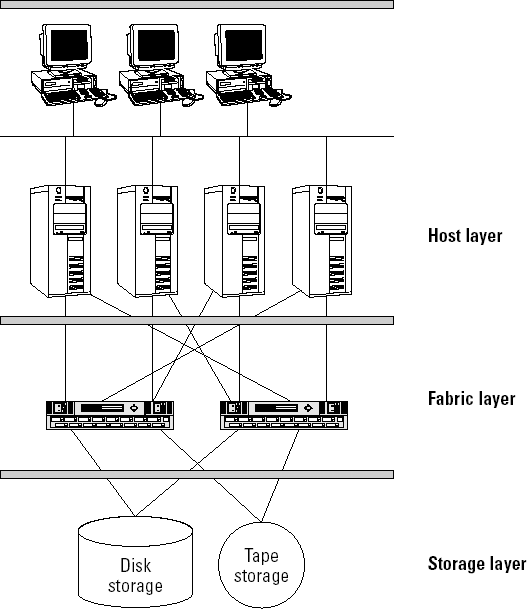Chapter 2. SAN Building Blocks
This is a pretty heavy-duty chapter. We dig deep into all the things that make up a storage area network (SAN) — the nuts and bolts of what's inside SAN storage arrays, and the network components that tie it all together. Read this chapter to find out what RAID means — and to see how it's used and the benefits you get from it. You get a look at how the components used in a SAN interact, and at the methods of connecting the components together.
SAN Components and How They're Used
In Chapter 1, we cover what we call the four Ps of storage area networks: parts, players, protocols, and platforms. The parts section can be broken down into three distinct layers: the host, fabric, and storage layers. (See Figure 2-1.) The following sections describe in more detail the components that make up the layers of a storage area network, along with where and how they're used.
In Figure 2-1, you can see the different layers in a SAN. Figure 2-2 depicts how all the components are physically and logically tied together through all the layers so information can be transferred from the host layer, all the way down through the fabric layer, to the disks in the storage layer.

Figure 2-1. SAN component layers.
Note
When an application in a server needs to store data in the SAN, it sends the request as a write-request command to the operating system. The operating system then gathers ...
Get Storage Area Networks For Dummies® now with the O’Reilly learning platform.
O’Reilly members experience books, live events, courses curated by job role, and more from O’Reilly and nearly 200 top publishers.

